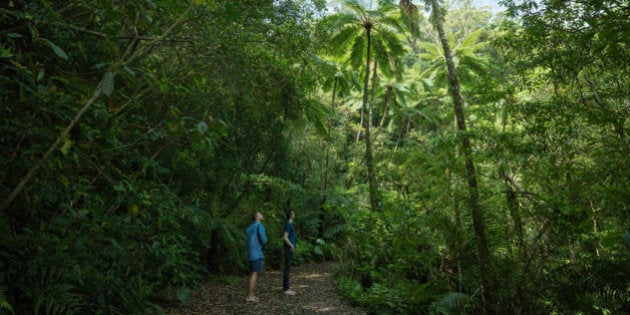
On June 6, much of the world will be celebrating World Environment Day, the annual United Nations day to raise awareness and action for the environment. As the UN puts it, World Environment Day is an "opportunity for everyone to realize the responsibility to care for the Earth and to become agents of change."
In my role as Sustainability Director for Asia Pulp & Paper, one of the leading paper manufacturers in the world with most of its operations located in the tropical forests of Indonesia, I see firsthand the value that forests play in the global environment. In addition to environmental impact, forests also have a tremendous economic and social effect on the communities around it. This is why it's so important to continue the education and the dialogue about forests.
In recognition of World Environment Day, here are some facts and figures about forests, with the hope that this can play a small part in raising awareness and creating some actions to manage these environmental treasures and economic engines.
It's important to note that these facts reinforce the need for and further drive the implementation of global commitments on conservation.
- 30.6 per cent of the estimated area of land on earth, or about 4 billion hectares worldwide, is covered by forests.
- In 2000, countries all over the world finally agreed on a standardized definition of forests.
- 75 per cent of the world's accessible fresh water for domestic, industrial and agricultural use is supplied from forested watersheds and wetlands.
- Tropical forests on average contain 50 per cent more carbon per hectare than forests not in the tropics.
- More than half of the world's species of animals, plants and insects are found in tropical forests, the most biologically-diverse ecosystems on land -- and nowhere else.
It's important to note that these facts reinforce the need for and further drive the implementation of global commitments on conservation. Two recent examples of these commitments include The New York Declaration on Forests and the "Road to Paris" initiative. These two initiatives showcase how NGOs, governments and businesses came together to make a public commitment to protect and preserve the world's forests.
This not only underscores the progress of helping to combat zero deforestation and climate change, but it shows that stakeholders recognize the magnitude and complexity of global conservation, and understand that no one organization can tackle the problem on its own. Such initiatives demonstrate what can be achieved with a broad-based collaboration between public and private-sector organizations.
APP is proud to be working as part of the solution. In February 2013, APP launched its Forest Conservation Policy to create a viable pulp and paper industry, while ending deforestation across its supply chain, shortly followed by announcing at it would protect and restore one million hectares of Indonesian forest.
It's clear that more work still needs to be done and that this is just one step in a long journey. The continuing education of and the protection of forests can make a major contribution to reducing global greenhouse gas emissions. We call on other companies to make the same commitment and put programs in place to help achieve this enormous task of protecting forests worldwide.
Follow HuffPost Canada Blogs on Facebook
ALSO ON HUFFPOST:
